Demystifying Multimedia was commissioned by Apple Computer to become the source for information about the process of creating multimedia products. We concentrated on describing the process and roles involved with any interactive experience and left the descriptions of tools and commercial software to other books. This organization and selection of material has made it a timeless resource for helping readers find their way in a rapidly changing industry. This book was specifically designed to translate easily into color print and interactive CD-ROM editions.
The book has been adopted as the industry standard for developers, producers, and readers who are interested in learning more about multimedia. It is also in the classrooms of multimedia courses at San Francisco State University, UCLA, University of Texas, University of Washington, University of Maine, and Helsinki’s University of Industrial Arts.
Sadly, we had no control over the cover or the colorization of the book when it went to Random House.
1994
Participants:
Nathan Shedroff: Writing, Editing, Art Direction, Information and Visual Design, Illustration, Production
Ken Fromm: Writing, Editing
J. Sterling Hutto: Writing, Production, Project Management
Henri Poole: Production, Content Expertise
Mark Beaulieu: Writing, Research
Chris Okon: Writing, Research
James Cottle: Photography
Kathleen Egge: Illustration, Production
Randy Haykin: Client
In brainstorming this book’s possible organization, we determined many valuable ways of arranging the content including, by process (the steps in creating a successful product), by role (the responsibilities and skills needed), and by project (the types of products that could be built). We settled on the idea of organizing the book by our development process but built indexes to the book from the point of view of these other issues. This allows readers with different concerns to find answers quickly within the framework of their personal concerns.
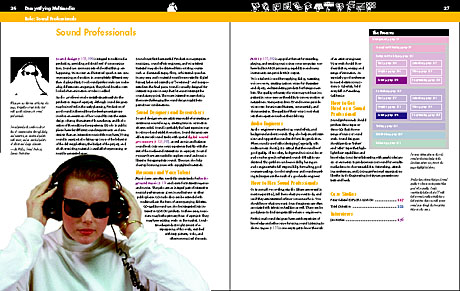
The Role Indexes are particularly successful because they orient the book to different reader’s personal goals, such as finding a job or hiring an artist. The elements of the secondary organizations become icons that indicate important material throughout the book for those roles and projects, making it easy to browse only for the material that meets certain criteria. In essence, this functions as a data filter but in the context of a print medium.
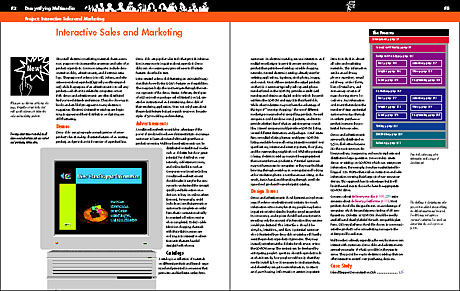
Similarly, the Project indexes introduce the book’s content within the context of specific categories of products.
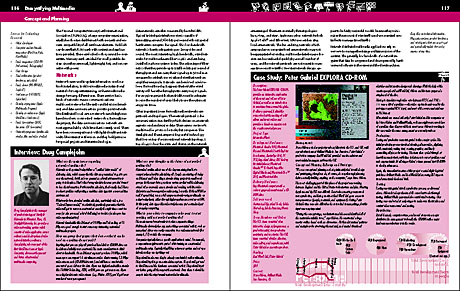
The book was designed to support eventual color-coding of chapters, illustrations, and jump words, but these function as well in monochrome. These work with the icons and jump words to subtly layer the information on each page by relevance and function.
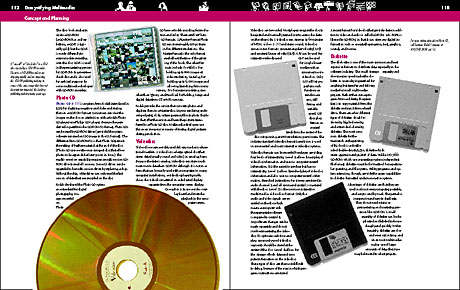
Many points of view are included in the interviews to build the idea that the vitality of this industry relies on different approaches and understandings.
Case studies give detailed information about the budgets and schedules of real projects and are built to support the overall organization by development process. They, with the interviews are listed in smaller indexes within each role or project page spread so readers do not miss information relevant to their needs.

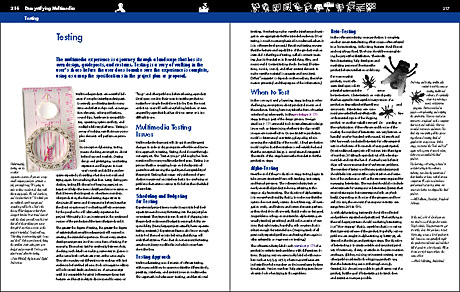
Recent Comments